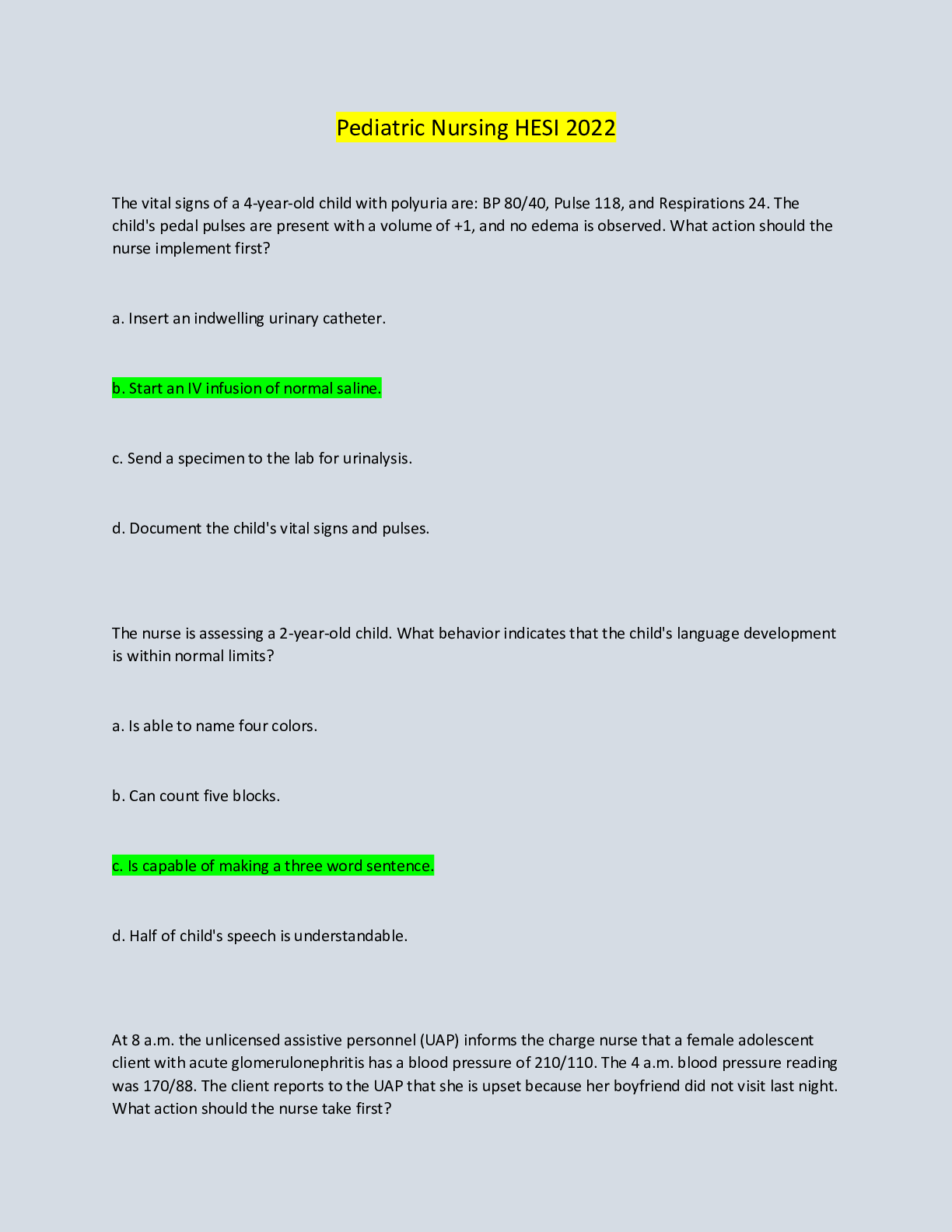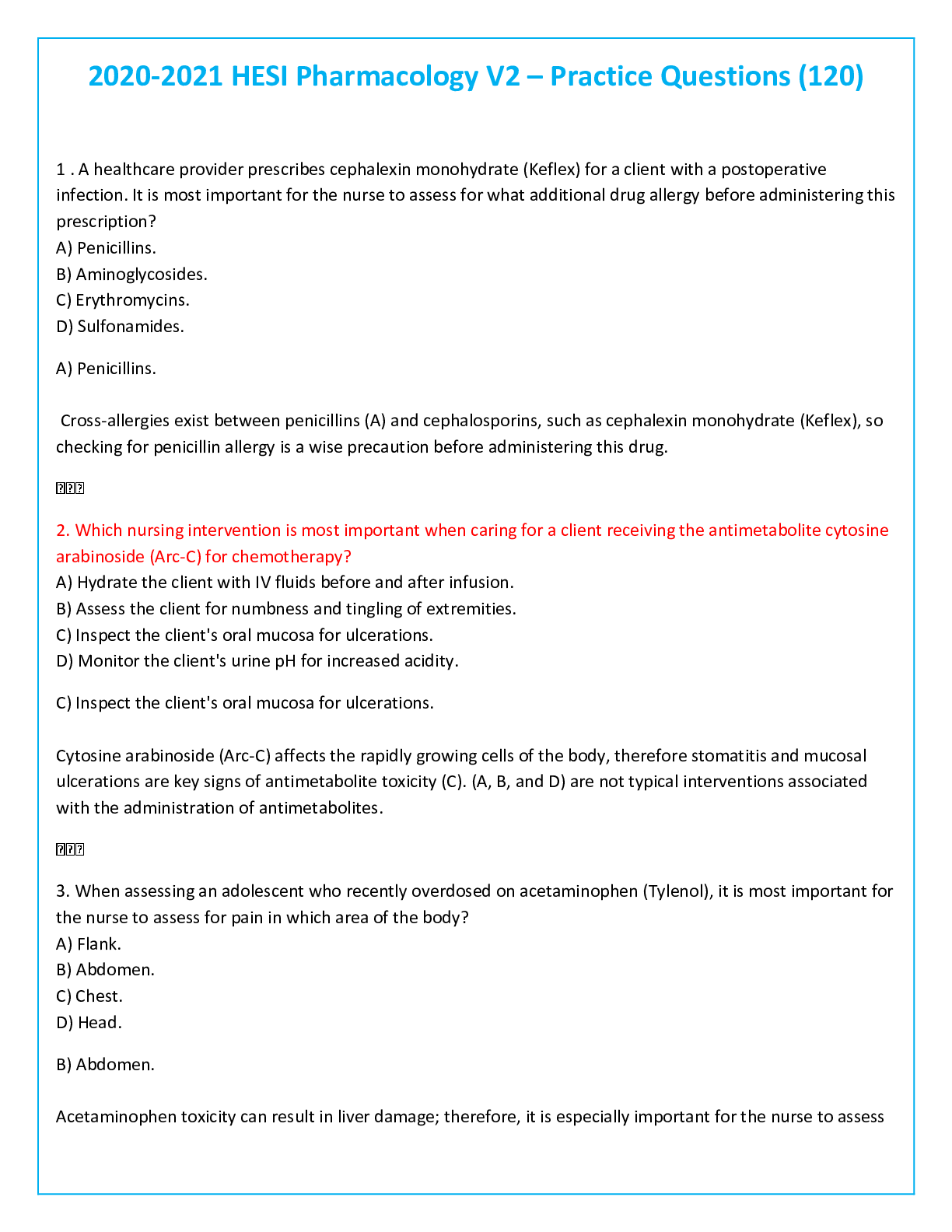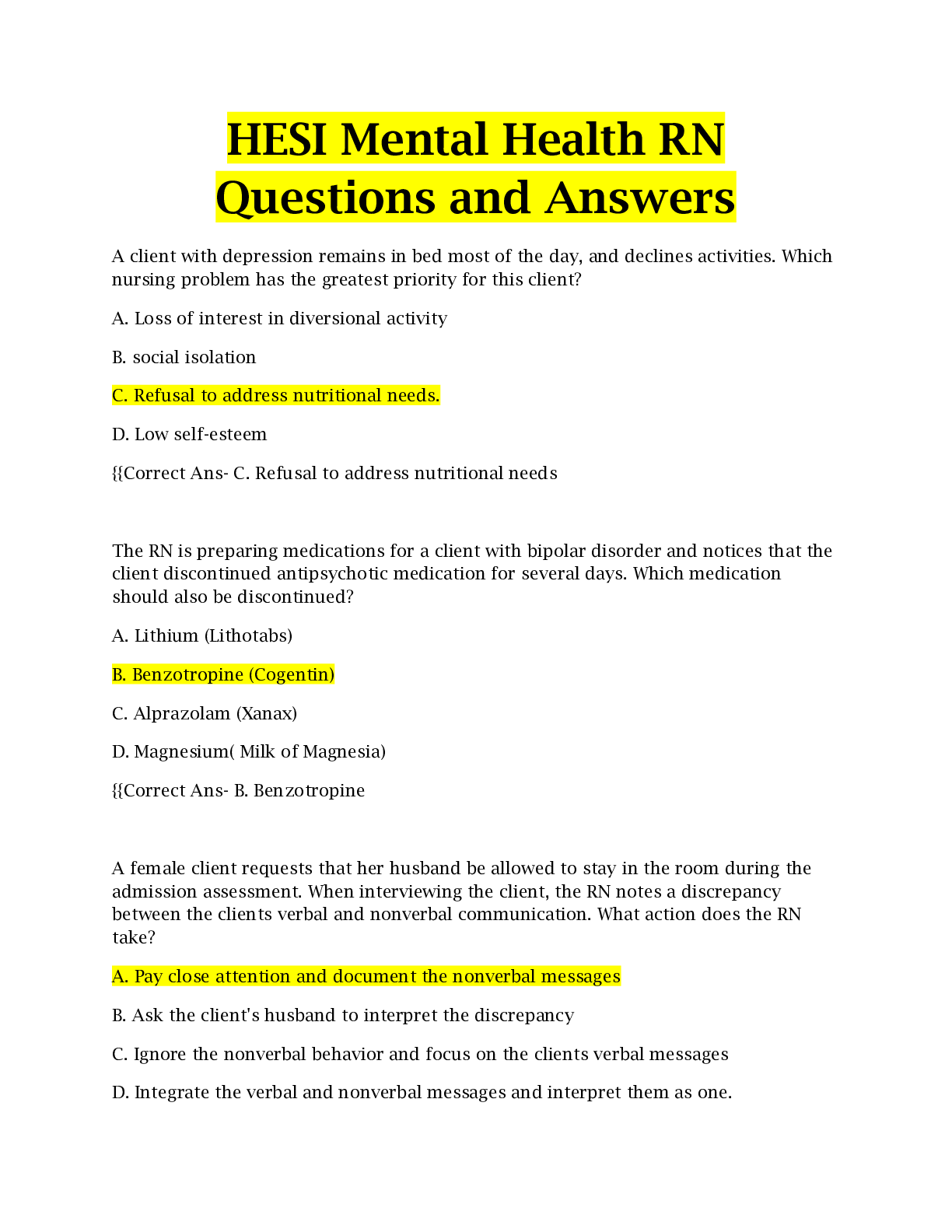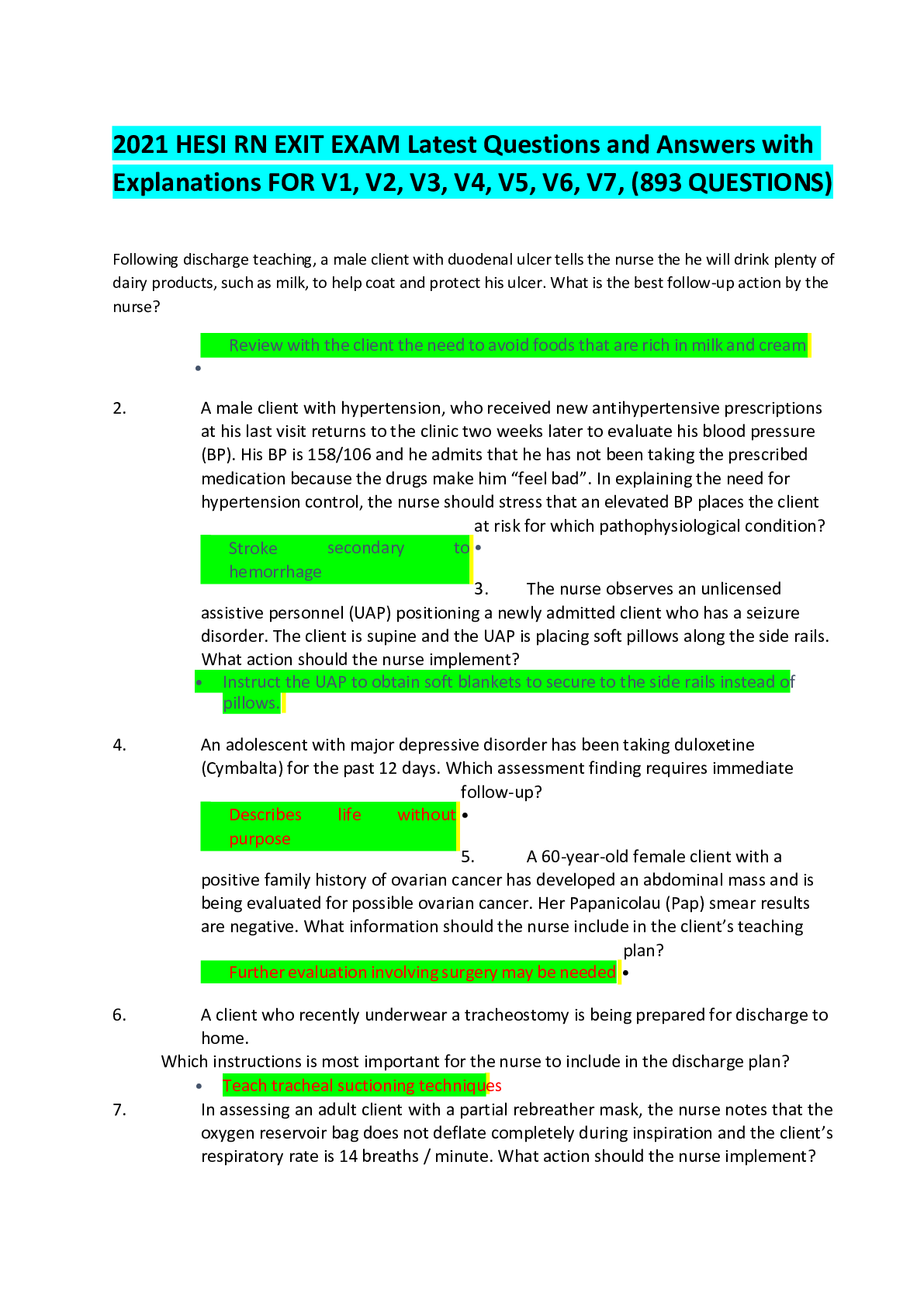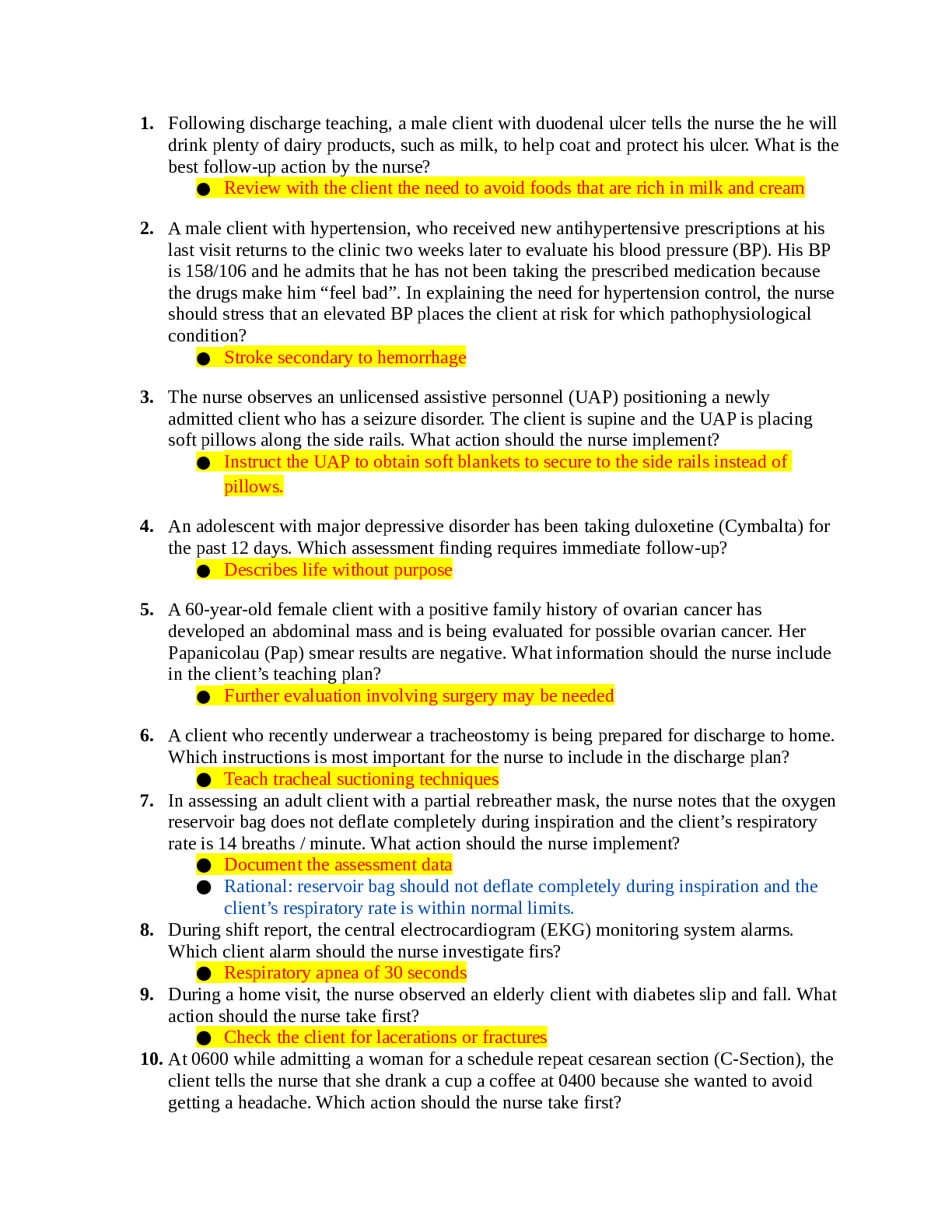2021-Critical Care HESI Review Study Guide
Document Content and Description Below
ABGs - a pH of 7.35-7.45 means that the body has compensated; anything outside this range is an uncompensated ABG - if your PaCO2 is high and you have acidosis then the cause is respiratory; if your... PaCO2 is low and you have alkalosis then the cause is respiratory - remember that with compensation the system that is not the cause will try to go in the direction that would fix the problem. For instance in this ABG (pH 7.36 HCO3- 28 PaCO2 60 PaO2 74) the cause is respiratory because the pH is low and the paCO2 is high, but the HCO3- is also out of normal range in order to compensate for the problem. (A high HCO3- causes alkalosis not acidosis so that is how you can know that the cause isn’t metabolic.) - if your HCO3- is high and you have alkalosis then the cause is metabolic; if your HCO3- is low and you have acidosis then the cause is metabolic - ABGs are a very hard concept to explain in a review like this. If you have your own way of understanding it and it works, then ignore this and USE IT! If you don’t understand and would like some help feel free to contact me and I’d be glad to help explain it better in person. - Normal values: - PaO2 80-100 - PaCO2 35-45 - HCO3- 22-26 - pH 7.35-7.45 EKGs Legal/Ethical - Nurse Practice Act is what legally defines the scope of practice for nurses in each state. Its purpose is to protect the public. -Assault- threaten to touch a patient when they don’t want to be touched Battery- touching a patient when they don’t want to be touched - Invasion of privacy- unwanted intrusion into the patients private affairs, could also mean leaving a pt exposed in a public area, facebook entries, or sharing their medical information - Slander- saying things that aren’t true about someone - Libel- writing things that aren’t true about someone - Informed consent - must be obtained by the physician, but the nurse can clarify and actually have the patient sign - pt must understand all risks associated with the procedure - needed for any invasive procedure - signed by the client or parent if minor; if that is not possible the spouse, adult children, closest relative, and power of attorney can sign - cannot sign if under the influence of drugs/alcohol or incompetent to make decisions - DNR- physician must write the [Show More]
Last updated: 1 year ago
Preview 1 out of 24 pages

Buy this document to get the full access instantly
Instant Download Access after purchase
Add to cartInstant download
We Accept:

Reviews( 0 )
$15.00
Document information
Connected school, study & course
About the document
Uploaded On
Apr 20, 2021
Number of pages
24
Written in
Additional information
This document has been written for:
Uploaded
Apr 20, 2021
Downloads
0
Views
48

